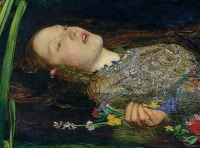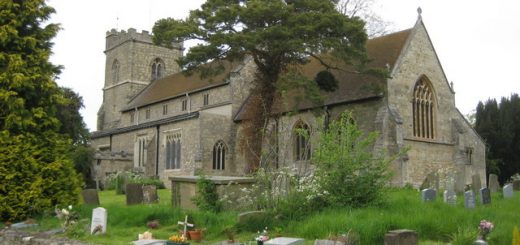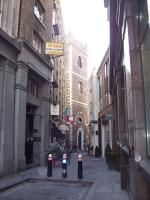Southampton Fields and The Brothers Footsteps
An area behind the British Museum was known as Southampton Fields. Now lying under Russell Square, Gordon Square and Tavistock Square, Southampton Fields was the reputed site of a certain duel between two brothers. The footsteps taken during this duel are thought to have left an unusual legacy and below is an account of them taken from ‘The Haunted Homes and Family Traditions of Great Britain’ by John Ingram (1897).
A very curious, but not an unparalleled, tradition is that referring to the so-called “Field of the Forty Foot-steps.” The story, as generally told, and as adapted by Jane and Anna Maria Potter, in their romance on the subject, is that two brothers, having taken different sides in the Duke of Monmouth’s rebellion, met, and, having engaged each other in fight, were both killed. Where they fought was in a field at the back of the British Museum, at the extreme north-east of Upper Montague Street, formerly known as Southampton Fields. Where the steps of the two desperate men pressed the ground no grass, according to tradition, would ever grow, and for many years the impressions, said to have been forty, of their feet, remained bare and ungrown over.
Many other accounts of this popular tradition exist, however, and from them may be selected the following, the substance of which appeared in the Arminian Magazine for 1781. The Brothers Steps, as they are styled, are stated to be discoverable in a field about the third of a mile northward from Montague House, now replaced by the British Museum. Their origin is, according to this version, due to the footprints of two brothers who quarrelled about a worthless woman, and fought out their quarrel at this place. “The prints of their feet,” says this authority, “are about the depth of three inches, and nothing will vegetate, so much as to disfigure them. The number is only eighty-three ” (forty may have been adopted for its alliterative sound), “but probably some at present are filled up. For I think there were formerly more in the centre, where each unhappy combatant wounded the other to death. And a bank on which the first fell retains the form of his agonizing couch by the curse of barrenness, while grass flourishes all about it. Mr. George Hall, who was the librarian of Lincoln’s Inn, first showed me those steps twenty-eight years ago, when, I think, they were not quite so deep as now. He remembered them about thirty years, and the man who first showed them him about thirty more, which goes back to the year 1692; but I suppose they originated in the reign of King Charles the Second. My mother well remembered their being ploughed up, and corn sown to deface them, about fifty years ago. But all was labour in vain, for the prints returned, in a while, to their pristine form, as probably will those that are now filled up.”
The above account of the The Brothers’ Footsteps appeared so extraordinary to the Editor of the Arminian Magazine that, as he says, he did not know what to think of it. He knew his informant to be a person of good understanding and real piety, and yet ” he testified what he had seen with his own eyes/’ To satisfy him- self about the strange recital, the Editor determined to seek out more evidence, and he soon found it.
“A while ago,” runs his narrative, “being at Mr. Cary’s, in Copthall Buildings, I occasionally mentioned The Brothers’ Footsteps, and asked the company if they had heard anything of them. ‘Sir,’ said Mr. Cary, ‘sixteen years ago I saw and counted them myself.’ Another added, ‘And I saw them four years ago.’ I could no longer doubt but they had been seen. And, a week or two after, I went with Mr. Cary and another person to seek them.
“We sought for nearly half an hour in vain. We could find no steps at all within a quarter of a mile, no, nor half a mile, north of Montague House. We were almost out of hope, when an honest man, who was at work, directed us to the next ground, adjoining to a pond. There we found what we sought for, about three-quarters of a mile north of Montague House, and about five hundred yards east of Tottenham Court Road.
The steps answer Mr. W’s description. They are of the size of a large human foot, about three inches deep, and lie nearly from north-east to south-west. We counted only seventy-six ; but we were not exact in counting. The place where one, or both, the brothers are supposed to have fallen is still bare of grass. The labourer showed us also the bank where (the tradition is) the wretched woman sat to see the combat.”





Recent Comments